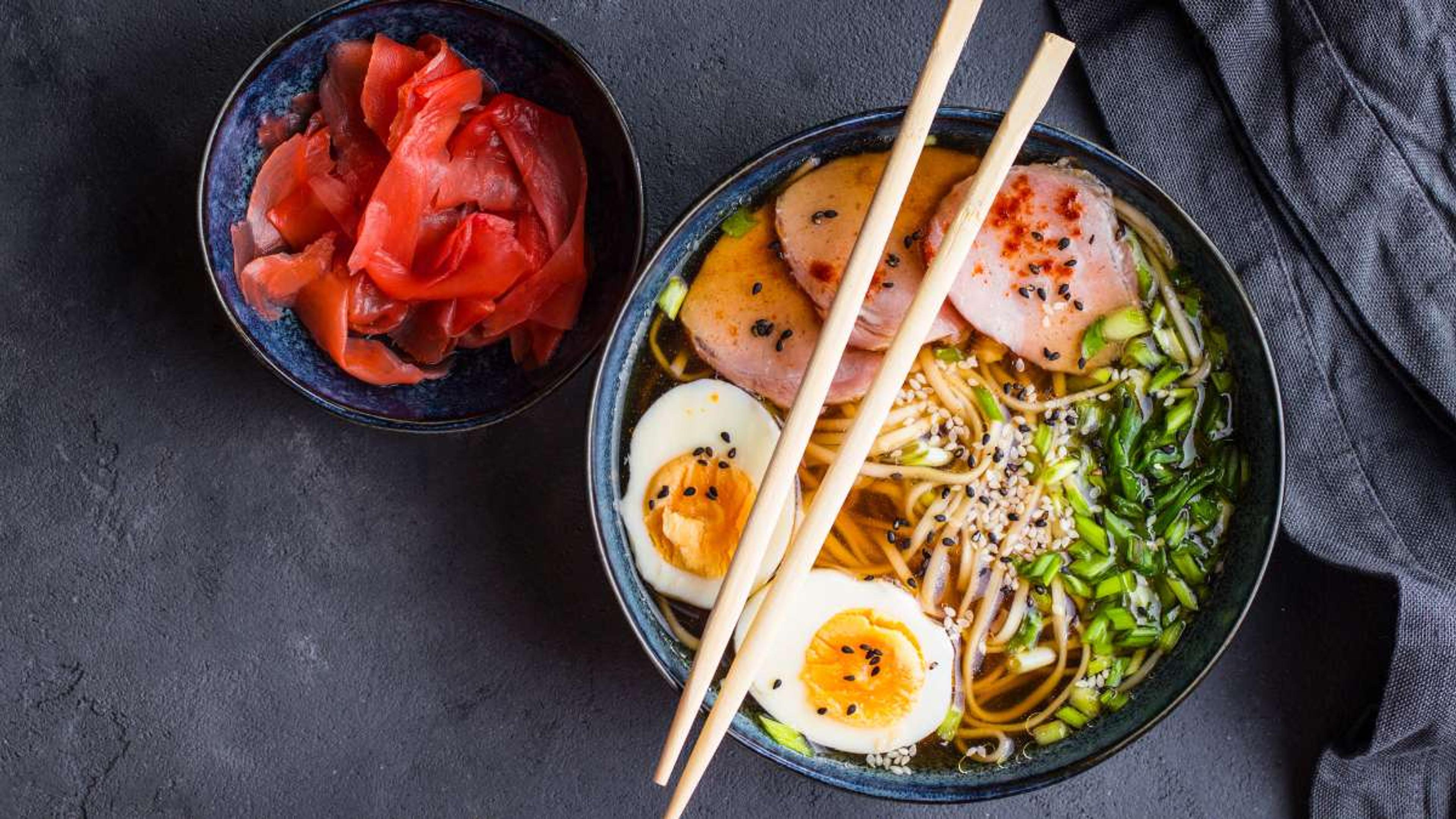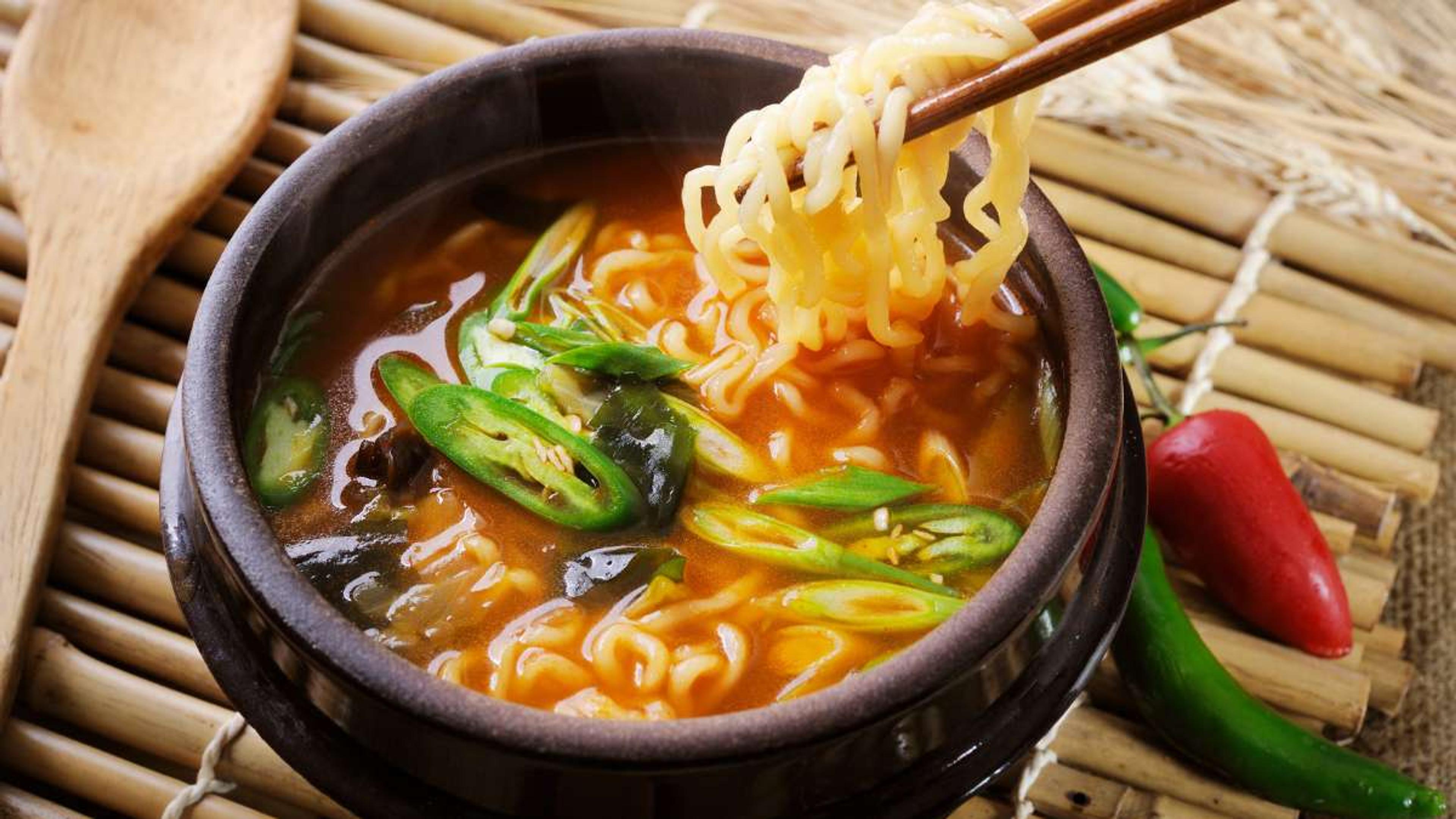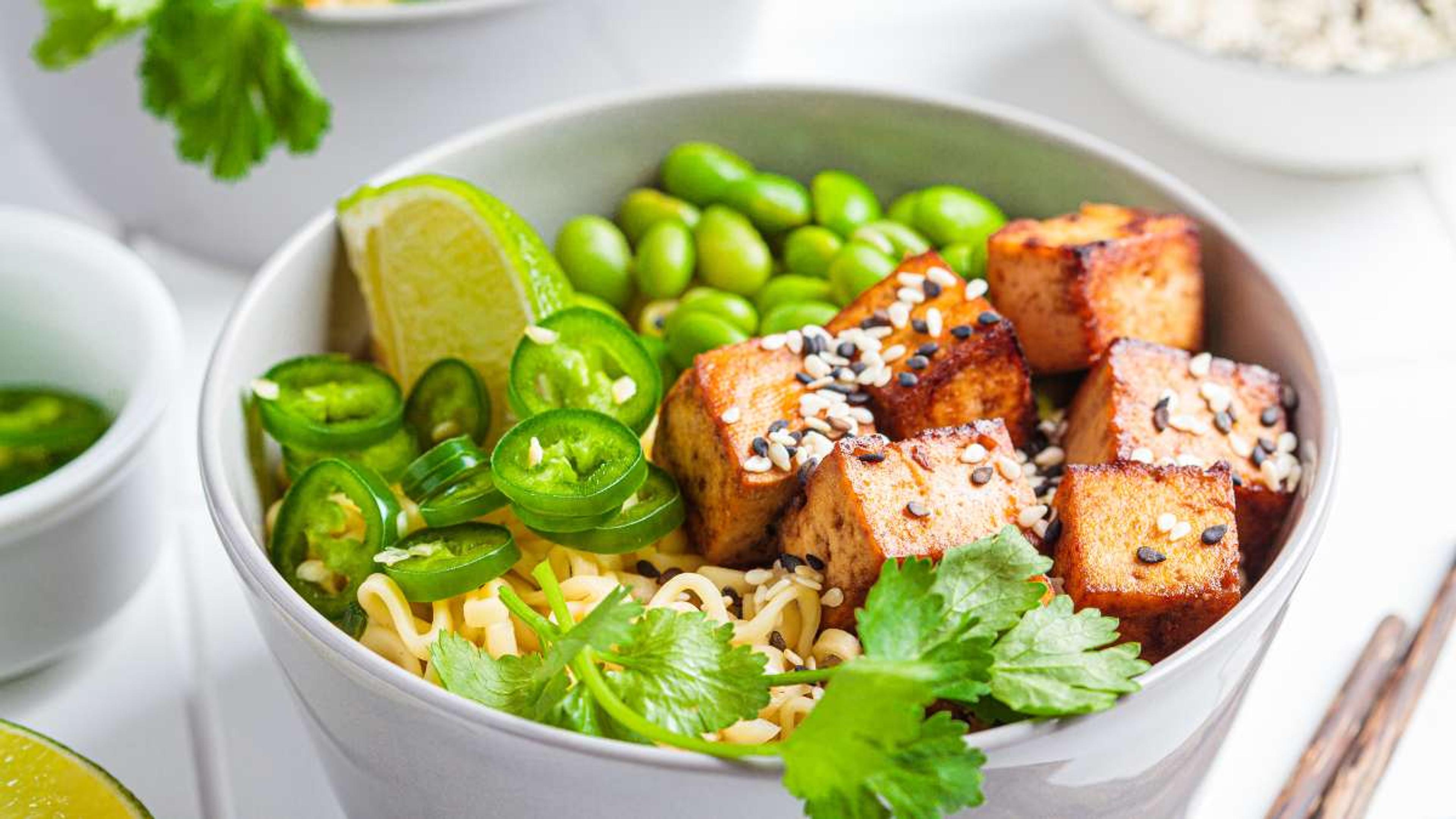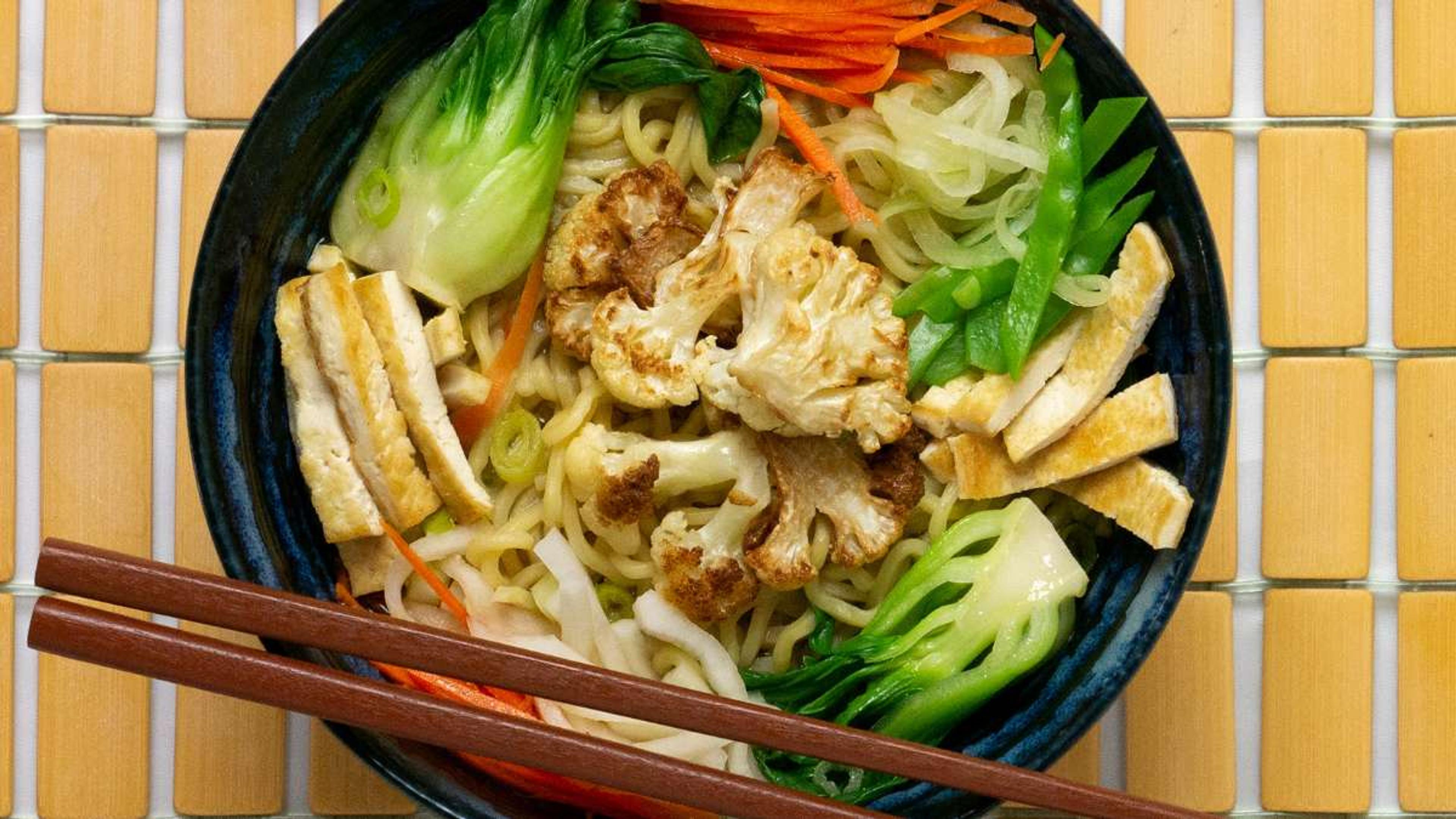Is Ramen Vegan? Here's What You Need to Know

- Key Takeaways
- Brief overview of ramen and its popularity worldwide.
- Traditional Ramen Ingredients
- Vegan Ramen Variations
- Common Misconceptions about Vegan Ramen
- How to Identify Vegan Ramen
- Making Vegan Ramen at Home
- Conclusion
- FAQs
Looking for a delicious and satisfying meal, but unsure if ramen is vegan? You're not alone. Many people are curious about the vegan status of this popular noodle dish. In this blog post, we'll delve into the world of ramen to help you navigate through its vegan variations and find the perfect bowl that aligns with your dietary preferences. Hungry for more? Let's dive in!
Key Takeaways
- Traditional ramen often contains non-vegan ingredients like meat-based broths and flavor packets.
- However, there are many vegan options available with plant-based broths and alternative ingredients.
- Vegan ramen can be just as tasty and flavorful as traditional ramen, thanks to the use of the right ingredients.
- When dining out or buying packaged ramen noodles, it's important to check labels and ask questions to ensure they are truly vegan.
Brief overview of ramen and its popularity worldwide.
Ramen is a tasty noodle soup from Japan. It became well-liked there after World War II. The world learned about ramen in 1958 when Momofuku Ando made instant noodles, his Company popularly known as 'Nissin Foods' worldwide. Now, people everywhere love this food, especially the popular brand of instant noodles called Nissin Top Ramen.
There are many kinds of ramen you can get today like vegan, halal, and gluten-free ones. In America, ramen is very popular too and adds to its love around the globe.
Traditional Ramen Ingredients
Traditional ramen consists of three main components: broth, noodles, and toppings. For those who prefer a vegetarian option, there are many delicious variations of vegetarian ramen available that use vegetable broth and a variety of vegetables as toppings.

Explanation of the basic components of ramen: broth, noodles, toppings.
Ramen is a tasty dish made up of three main parts: broth, noodles, and toppings. The broth can come from different sources like soy sauce, miso and dashi. It brings amazing umami flavor to the meal.
Wheat flour and water make up traditional ramen noodles. They are thin, long and slurp-worthy! Toppings add fun flavors to your bowl. Common choices include sliced pork or chashu, green onions for a little crunch, seaweed known as nori for taste of the sea, bamboo shoots or menma for texture boost and soft-boiled eggs that melt in your mouth.
Some ingredients may not fit into a vegan diet though. Things like chashu pork or soft-boiled eggs are loved by many but not suitable for vegans. But worry not! We still have lots of yummy options on our table - more about it later! Now you know what makes that magic bowl called ramen - let's dig deeper into its vegan version next.
Common non-vegan ingredients found in traditional ramen.
Ramen has many items that are not vegan.
- The broth often uses chicken or beef stock.
- Flavor packets can have meat extract.
- Some ramen noodles use eggs.
- Ramen toppings like pork slices are not vegan.
- Brands such as Maruchan and Nissin use non-vegan seasonings.
- Miso soup, a common side dish, sometimes has fish stock or dashi.
- Spicy miso ramen may contain animal fats for flavor.
Flavor packets often contain non-vegan ingredients
Flavor packets can trip up many vegans. They are part of instant ramen noodles. The issue is they often have non-vegan items in them. This may include things like meat or dairy products.
Even if the noodles seem plant-based, the flavor packet might not be. Some brands do this more than others. For example, Top Ramen has flavors with lactose and egg white. So it's crucial to check the ingredients list of each flavor packet before using it in your soup!
Vegan Ramen Variations
Explore the variety of vegan ramen options, from plant-based broths to alternative ingredients, for a delicious cruelty-free meal. Find out more here!

Introduction to vegan ramen options available.
Vegan ramen options are becoming increasingly popular for those following a plant-based diet. These alternatives use plant-based broths, such as miso or vegetable broth, instead of animal-based broths.
You can find vegan ramen noodles made from wheat or rice flour at grocery stores or specialty shops. Toppings like tofu, shiitake mushrooms, green onions, and seaweed are commonly used to add flavor and texture to the dish.
Some vegan-friendly brands even offer instant ramen packets that are specifically labeled as vegan. With these options available, it's easier than ever to enjoy a delicious bowl of vegan ramen!
The use of plant-based broths and alternative ingredients.
Vegan ramen often uses plant-based broths and alternative ingredients with a variety of vegan flavors. Here are some examples:
- Mushroom broth: This flavorful broth is made from simmering mushrooms, garlic, onions, and other herbs and spices. It adds rich umami flavors to the ramen.
- Vegetable broth: A combination of various vegetables like carrots, onions, celery, and herbs can create a light and refreshing base for vegan ramen.
- Miso broth: Made from fermented soybeans, miso paste adds a savory and slightly tangy flavor to the ramen. It's a popular choice for vegan ramen recipes.
- Seaweed broth: Boiling dried seaweed in water creates a mineral-rich base that enhances the taste of the noodles and toppings.
- Coconut milk-based broths: By combining coconut milk with vegetable stock or curry paste, you can create creamy and aromatic broths for vegan ramen.
- Tofu: Crispy or soft tofu is often used as a protein source in vegan ramen. It absorbs the flavors of the broth and adds texture to each bite.
- Vegetables: Bok choy, spinach, bean sprouts, corn, bamboo shoots, and sliced mushrooms are just a few examples of vegetables commonly found in vegan ramen bowls.
- Noodles: Look for noodles made with rice flour or buckwheat instead of traditional wheat-based noodles. These gluten-free options are suitable for those with dietary restrictions.
Common Misconceptions about Vegan Ramen
Many people believe that vegan ramen lacks flavor and authenticity, but this is far from the truth. Read on to discover the truth about vegan ramen and why it's a delicious and satisfying option for both vegans and non-vegans alike.

Addressing myths and misconceptions about the taste and authenticity of vegan ramen.
Vegan ramen has often been criticized for not tasting as good or authentic as traditional ramen. However, this is a misconception. Vegan ramen can be just as tasty and flavorful, thanks to the use of plant-based broths and alternative ingredients.
For example, miso-based broths and shiitake mushrooms can give vegan ramen that umami flavor that is characteristic of traditional ramen. Additionally, toppings like tofu, nori (seaweed), green onions, and sprouts can add texture and depth to the dish.
So don't believe the myth that vegan ramen lacks taste or authenticity – it's all about using the right ingredients & your preparation style!
Comparing the nutritional value of vegan vs. non-vegan ramen.
It's important to evaluate the nutritional difference between vegan and non-vegan ramen to understand its health impact. Here's a straightforward comparison:
Vegan Ramen:
- Calories: Generally lower due to the absence of fatty meats and high-fat broths.
- Protein: This varies depending on the plant-based ingredients used, such as tofu or tempeh.
- Fiber: Typically higher because of the inclusion of more vegetables and other plant-based ingredients.
- Vitamins and Minerals: Higher, especially if the dish includes a variety of vegetables.
- Fat: Generally lower, especially saturated fat, due to the absence of animal-based ingredients.
Non-Vegan Ramen:
- Calories: Higher due to the use of animal-based broths and meat toppings.
- Protein: Typically higher due to the inclusion of meat or eggs.
- Fiber: Might be lower, as traditional ramen focuses more on meat and noodles.
- Vitamins and Minerals: Lower, unless the dish includes a variety of vegetables.
- Fat: Often higher, especially in saturated fat, due to the inclusion of animal-based ingredients.
Often higher, especially in saturated fat, due to the inclusion of animal-based ingredients.These nutritional differences make vegan ramen a healthier choice for those watching their calorie intake and who want to eat a well-balanced diet.
How to Identify Vegan Ramen
To identify vegan ramen, check ingredient labels, look for specifically labeled vegan noodles, and consider contacting the manufacturer if unsure. Read on to discover more tips for spotting vegan ramen on menus when dining out!

Check ingredient labels for animal-based products
- Look for ingredients like eggs, dairy, and animal-based broths.
- Avoid ramen noodles that contain gelatin, which is derived from animals.
- Read the ingredient list carefully to identify any other animal-derived ingredients.
- Opt for ramen brands that clearly state they are vegan or use plant-based ingredients.
- If unsure about any ingredients, contact the manufacturer for clarification.
Look for specifically labeled vegan ramen noodles
When searching for vegan ramen noodles, it is important to look for packages that are specifically labeled as vegan. Not all brands and flavors of ramen noodles are suitable for a vegan diet, as they may contain animal-based ingredients or flavorings.
By checking the label for clear indications of being vegan, you can ensure that the noodles you choose align with your dietary choices. This way, you can enjoy delicious and satisfying bowls of ramen without any worries about consuming non-vegan ingredients.
Contact the manufacturer if unsure
To ensure that the ramen noodles you are considering are vegan, it's a good idea to get in touch with the company that produces them. They will be able to provide accurate information about the ingredients used and whether or not they contain any animal-derived products.
It's better to be safe than sorry, so reaching out to the manufacturer is always a smart move when you're unsure about the vegan status of a particular ramen product. With their help, you can make an informed decision and enjoy your vegan ramen without any worries.
Tips to spot Vegan Ramen on menus when dining out
To find vegan ramen when eating out, here are some tips:
- Check the menu for specific vegan options or symbols.
- Look for keywords like "vegan" or "plant-based" in the dish descriptions.
- Ask your server about vegan ramen choices or if they can make modifications to accommodate your dietary needs.
- Inquire about the ingredients in the broth to ensure it is free from animal products.
- Avoid toppings like meat, fish, and eggs, and opt for vegetable-based toppings instead.
- Be cautious of flavorings that may contain non-vegan ingredients like fish sauce or bonito flakes.
- Consider Asian restaurants that specialize in vegetarian or vegan cuisine as they are more likely to have vegan ramen options.
- Use online resources and apps to find restaurants that offer vegan-friendly ramen dishes in your area.
Making Vegan Ramen at Home
Create delicious vegan ramen dishes with simple recipes and ingredient swaps. Explore vegan-friendly ramen brands and products for a satisfying homemade meal.

Simple recipes and ingredient swaps for creating delicious vegan ramen dishes
Looking to make delicious vegan ramen broth at home? Here are some simple recipes and ingredient swaps to try:
1. Mushroom Broth Recipe:
- Sautee diced onions, garlic, and sliced shiitake mushrooms in olive oil until golden brown.
- Add vegetable broth, soy sauce, mirin (or rice vinegar), sesame oil and a pinch of salt and pepper.
- Simmer for 30 minutes to let the flavors meld together.
2. Crispy Tofu Toppings:
- Press tofu to remove excess water, then cut into small cubes.
- Toss tofu in cornstarch or arrowroot powder mixed with garlic powder, onion powder, salt, and pepper.
- In a separate pan, heat oil over medium-high heat and fry tofu until golden brown and crispy. A healthier option would be to air-fry .
3. Roasted Vegetable Additions:
- Preheat oven to 400°F (200°C).
- Toss your preferred vegetables (such as carrots, bell peppers, or bok choy) in olive oil, salt, and pepper.
- Roast for about 20 minutes or until vegetables are tender.
4. Noodle Options:
- Look for ramen noodles made from rice or wheat if you prefer gluten-free options.
- If using instant ramen noodles, discard the flavor packet and cook the noodles separately before adding them to your homemade broth.
5. Flavorful Garnishes:
- Sprinkle chopped scallions, green onions, sesame seeds, nori seaweed strips, or chili flakes on top of your finished bowl of vegan ramen for added taste and visual appeal.
Recommendations for vegan-friendly ramen brands and products.
Here are some vegan-friendly ramen brands and products (some come in the form of cup noodles) you can try:
- Lotus Foods Rice Ramen: Made with organic brown rice, these gluten-free ramen noodles are available in various flavors like miso soup and spicy kimchi.
- Tsubi Soup Vegan Ramen: These instant ramen cups are packed with flavor and come in options like creamy tom yum and spicy sesame.
- Koyo Mushroom Ramen: This organic ramen is made with shiitake mushrooms for a rich umami taste.
- Dr. McDougall's Vegan Miso Ramen: With no added MSG or artificial flavors, this ramen offers a hearty miso broth with chewy noodles.
- Mike's Mighty Good Craft Ramen: They offer vegan varieties like vegetable, spicy beef-less, and kimchi flavors with organic ingredients.
- Hakubaku Organic Ramen: These traditional-style Japanese ramen noodles are vegan-friendly and can be paired with your choice of plant-based broths.
Conclusion
In conclusion, ramen can be vegan if you choose the right ingredients. Traditional ramen may contain non-vegan components like meat-based broths and flavor packets. However, there are now many vegan options available with plant-based broths and alternative ingredients.
Whether you make it at home or dine out, it's important to check labels and ask questions to ensure your ramen is truly vegan. With these choices, vegans can still enjoy a delicious bowl of noodles packed with flavors!
FAQs
1. Is ramen vegan?
No, traditional ramen is not vegan as it usually contains animal-based ingredients such as broth made from meat or seafood.
2. Can I find vegan ramen options?
Yes, there are vegan ramen options available that use plant-based ingredients for the broth and toppings like tofu, vegetables, and mushrooms.
3. What should I look for to find vegan ramen?
To find vegan ramen, look for establishments that specifically offer a vegan menu or inquire if they have any plant-based options available. Read ingredient labels or ask about the components of the dish to ensure no animal products are used.
4. How can I make my own vegan ramen at home?
You can make your own vegan ramen at home by using vegetable broth or miso paste as the base instead of meat-based broths. Add in your choice of vegetables, tofu, seaweed, and noodles to create a flavorful and satisfying bowl of vegan ramen.

